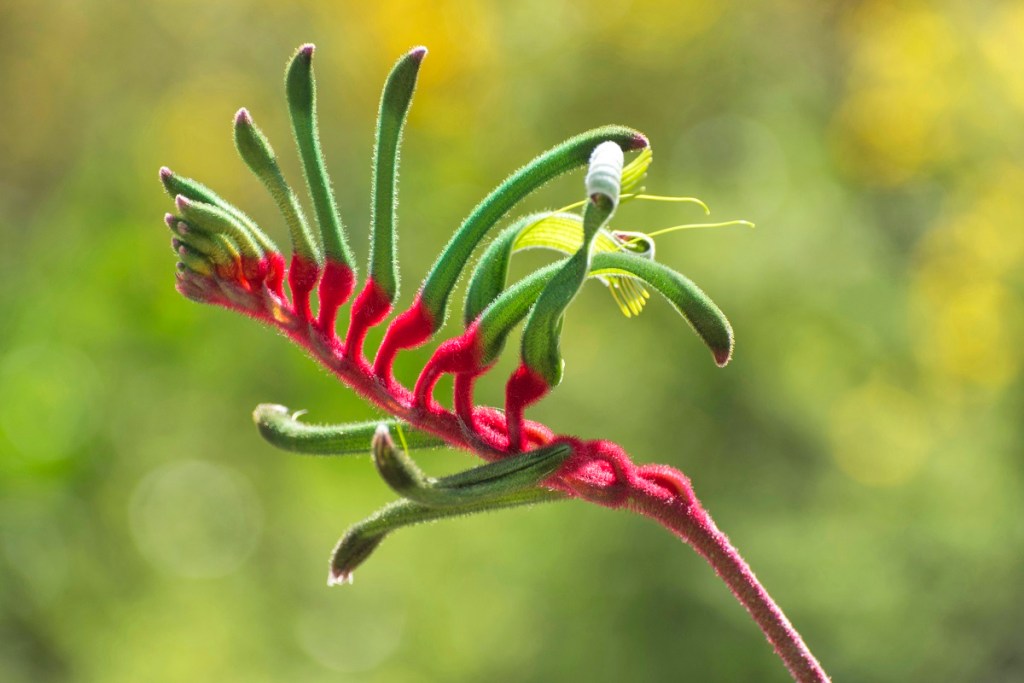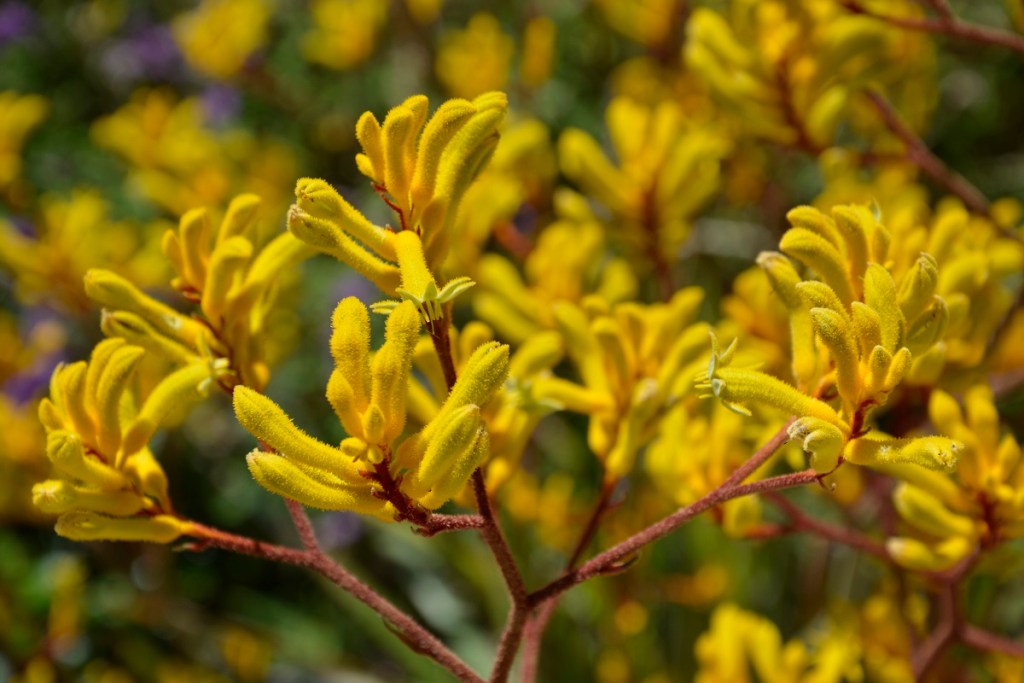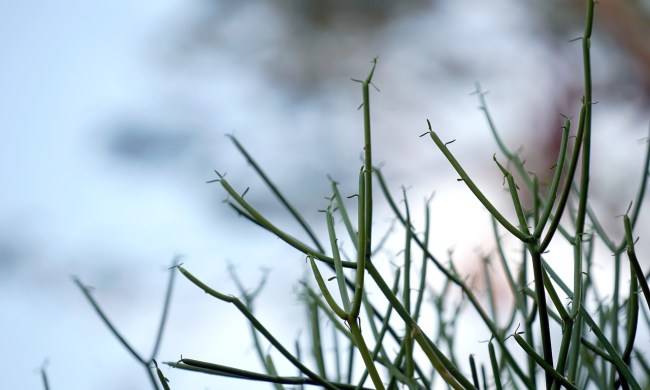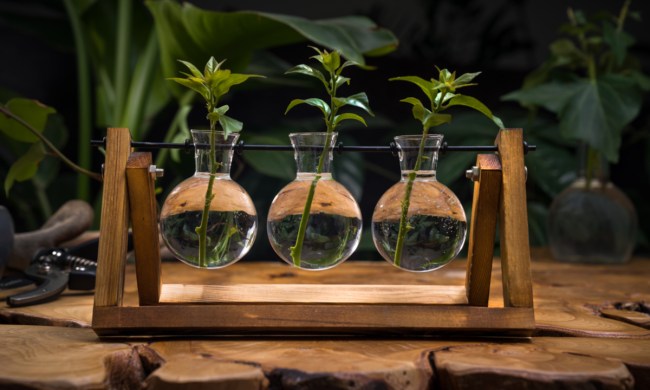Kangaroo paw plants are native to Australia, spanning 11 species and some subspecies that are grown by gardeners around the world. Depending on the variety, their flowers can be orange, purple, yellow, or red, with petals covered in velvety fuzz that resemble the paw of one of Australia’s most beloved animals. The kangaroo paw’s size can vary from species to species (especially in dwarf varieties), but in general, a mature kangaroo paw plant can be anywhere from two to ten feet tall and up to two feet across.
Kangaroo paw plant care is relatively simple. As long as you meet the requirements, you should have no trouble growing yours to maturity and getting it to bloom.

Benefits of kangaroo paw flowers
In modern times, the extract of the kangaroo paw flowers is used in skincare products to help keep skin looking youthful, as well as encourage cell growth to help with lines and wrinkles; however, these restorative properties haven’t just come to light.
The discovery of the benefits that the kangaroo paw flower possesses is credited to the Indigenous Peoples of Australia. They originally discovered the plant and learned that its flower had healing properties that could treat burns, cuts, and other wounds. Their traditional recipes have been around for thousands of years, so when you go to purchase a modern skin care product possessing the kangaroo paw flower extract, give a quick thanks and appreciation to the Peoples who first learned of the natural powers the Earth has to offer.
Caring for your kangaroo paw plant
Kangaroo paw plant care isn’t abnormally difficult, especially since these plants can thrive in both containers and garden beds. When growing in containers, it’s best to choose a dwarf variety like the Bush Pearl. General care across kangaroo paw species is relatively similar. None of them are heavy feeders, so you won’t need to fertilize regularly; however, ones in containers should be fertilized more often than their garden bed counterparts due to having fewer nutrients in the potted soil.
When cared for properly, your kangaroo plant will bloom between late spring and fall. After they’ve finished blooming for the season, these plants don’t mind a decent pruning. You can trim off the spent blooms and foliage so that only six inches above the soil remains, which will help promote fuller growth in the plant.
Ideal light and temperature
Kangaroo paw plants grow best in a spot with at least six hours of direct, full sunlight per day. Unlike a lot of other delicate flowers, they can even tolerate heavy afternoon light. Although they can tolerate less sun, a spot like this would be optimal to encourage strong growth and blooms. You’ll know if your kangaroo paw plant isn’t receiving enough light when it starts to fall over.
Given that the plant’s native environment is Australia, it’s no surprise that they love the heat and hate the cold. Ideal temperatures for kangaroo paw plants are between 70 and 80 degrees Fahrenheit, which is often why their blooming season falls in the summertime. Once it hits below 50 degrees, container plants should be brought inside if you’re not in the preferred USDA hardiness zone.
Watering your kangaroo paw (and what soil is best)
Because they love heat and warm weather, kangaroo paw plants prefer their soil to have a moderate amount of moisture. You don’t want it to be soggy, but you don’t want to let the plant fully dry out either. For most of the growing season, you can water the plants when the top two inches of soil are dry; however, you might notice an increase in waterings during the active blooming season.
Kangaroo paw plants prefer a fast- and well-draining sandy soil that’s slightly acidic. If you don’t have soil that matches, your kangaroo paw should do just fine in most types as long as it’s well-draining so that the excess water has somewhere to go (this is especially important for potted plants).

Is indoor growing better than outdoors?
Kangaroo paw plants grow best outdoors in hardiness zones 10 and 11. They should be planted in the spring after the last frost. In these zones, you’ll have no trouble overwintering your kangaroo paw plant outdoors and enjoying it as a perennial; however, outside of these zones, kangaroo paw plants are treated more like annuals. They won’t survive the winter, so if you have a variety you don’t want to lose, it may be best to grow the plant in a container. That way, you can move it outdoors for the warm weather and bring it indoors when things start to cool down.
Propagating your kangaroo paw plant
Kangaroo paw plants can be propagated two ways: by seed and by division. Propagating by seed takes a little bit of patience and attention. The seeds can be planted in the spring, after being soaked for two hours in hot water. Soaking the seeds softens the coat and increases likelihood of germination. After two hours, place the seeds on warm seed starters. The soil should be kept moist, and you should start to see some germination close to or shortly after six weeks. If planting by seed, it’s best to start your seeds toward the end of winter so they can be planted outside when the last frost has passed.
If you decide to propagate via division, you simply have to cut the mature plants with a sharp, sterilized knife at the roots. You can immediately replant the divided ones wherever you want, whether in containers or garden beds. Since they’re already mature, you don’t have to worry about waiting for them to reach a certain size. Plus, dividing your kangaroo paw plants every few years helps promote fuller, healthier growth.
Common problems with kangaroo paw plants
Most pests tend to leave kangaroo paw plants alone. The biggest problem you’ll want to look out for is ink spot disease, which is a fungus that causes blackening of the leaves and stems. Spotted, diseased parts of the plant should be removed as soon as possible to prevent spreading.
The best way to make sure your kangaroo paw plant is growing happy, healthy, and strong is to inspect it regularly. It doesn’t have to be every day, but you should give all your house and garden plants a good look at least once a week to stay on top of their care. That way, you can correct any issues as soon as they arise and focus more on fostering beautiful blooms.


